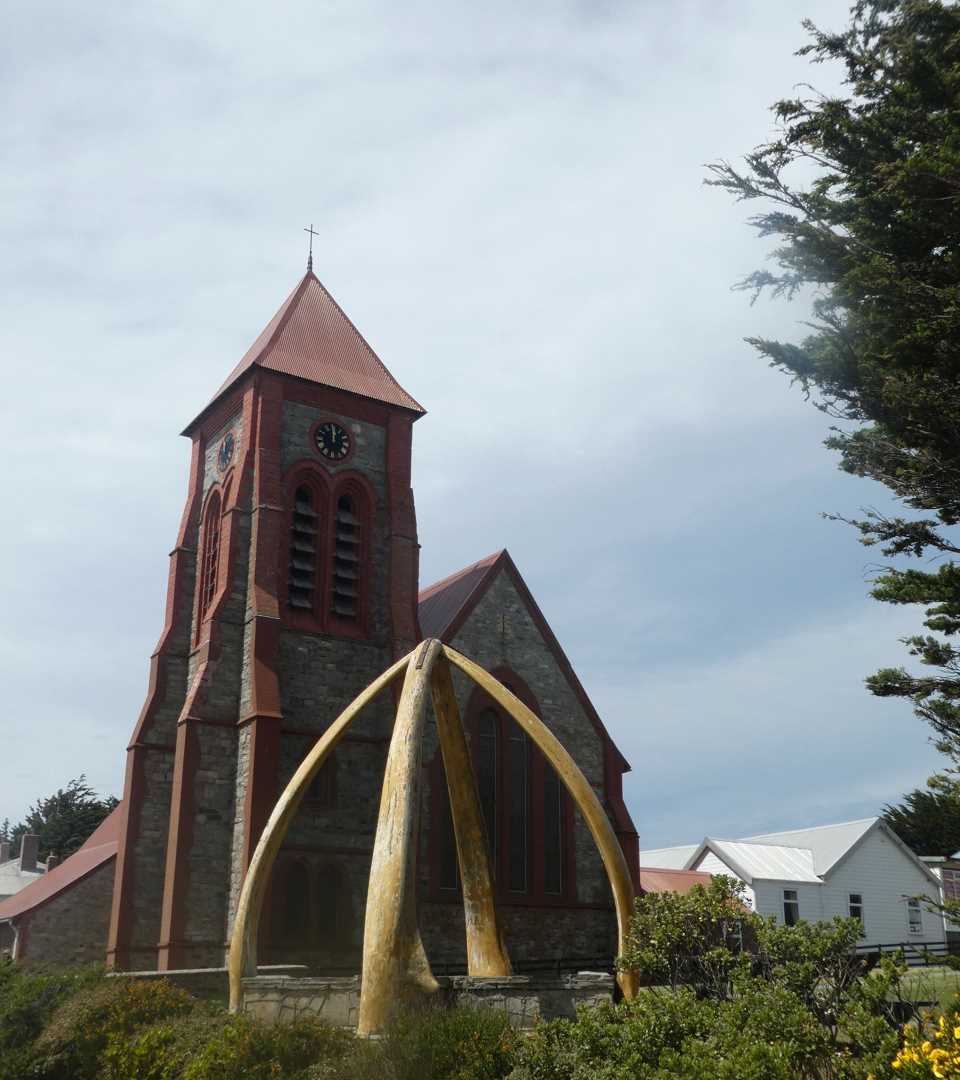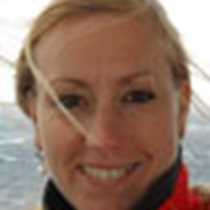This morning at 0800 we arrived in the small harbour of Stanley, the Capital of the Falkland Islands.
Winds were gusting outside, but with the sun trying to penetrate through the clouds, it looked like we were going to have a lovely day and it worked out like that indeed.
There were several options to choose from today, either going on a tour in the morning and an afternoon walk around Gypsy Cove or just some free time to explore Stanley at our leisure. There was a bit of everything for everybody.
Some of us decided to go on a farm tour, just to learn more about the sheep farming in the Falklands, but most of us decided to join the Stanley highlights tour to get a bit of an overview of this interesting small capital. The tour took us all around Stanley, stopping at a few points of interest like Whalebone Cove, a place where at low tide a large number of whale bones can be seen. We had a chance to see the shipwreck
Of Lady Elizabeth. She was built in Sunderland, UK and on a voyage from Vancouver she suffered damage whilst rounding Cap Horn. She limped into Stanley for repairs, which due to costs, were never carried out. After serving as a floating warehouse for many years, she was blown in to her current position by a violent gale in 1936.
We continued on to some peat banks where our guide explained the importance of peat for Stanley and we drove past many local houses, including the government house, and stopped at the War Memorial remembering the soldiers who fought in the Falkland Island battle.
The tour finished at the museum where many chose to wonder around Stanley and have some lunch in one of the local pubs.
For guests who wished to see more wildlife, there was the option in the afternoon to visit Gypsy Cove. Gypsy Cove is by far the easiest wildlife destination to reach from Stanley. It is a small bay with a crescent of white sand, surrounded by heathland in which Magellanic penguins make their homes. Low cliffs provide nesting grounds for rock cormorants and black-crowned night herons whilst many wading birds, waterfowl and gulls can be observed in the area. Gypsy Cove forms part of the Stanley Common & Cape Pembroke peninsula, which is a National Nature Reserve.
The last shuttle bus returned to the ship at 1745 and by 1800 we sailed out of Stanley Harbour.
Our evening started with our usual recap and briefing followed by a very tasty ‘Best of British’ dinner.
The last two days at the Falklands were absolutely brilliant, but knowing we were now on our way to South Georgia, a place we cannot wait to see and we heard so much about, certainly felt very exciting.







